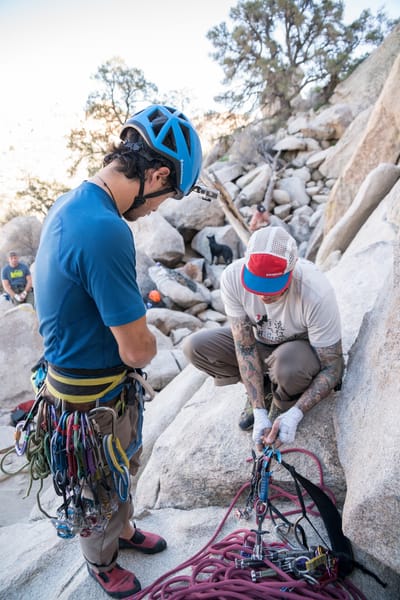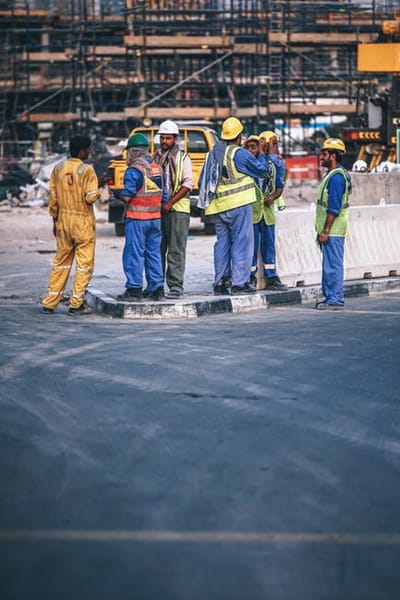Factors to Consider When Choosing a Roof Fall Protection System

One of the most crucial aspects you should look into when choosing roof fall protection systems in compliance with the OSHA standards. You should ensure that the roof fall protection system you intend to settle on complies with the required OSHA standards to guarantee safety to your employees. In as much as most fall protection systems are manufactured by professionals, it is advisable to double check just to be certain that they meet the required standards. In addition to that, you should also ensure that the fall protection you intend to install is easy to use and flexible to ensure comfort for your employees. Read more about bluewater safety railing
When choosing a roof fall protection system, you should also consider your needs. Roof fall protection systems are available in different types, hence the need to identify the one that suits your work environment best. You can either settle on a passive fall protection system or a restraint system depending on your need and preferences. The main role of a passive fall protection system is to prevent the hazard of free fall from occurring and may include guardrails, warning line systems, and positioning device systems. On the other hand, the restraint system aims at preventing employees from reaching the point susceptible to free fall and may include body belts, tether lines and also restraint lanyards. To learn more about bluewater fall protection systems follow the link.
The other important factor you should put into consideration when choosing a roof fall protection system is your budget. You should come up with a budget that will comfortably cover all the costs of installing a high quality roof fall protection system. If you are working on a tight budget, you may need to compare the various pricing offered by the different vendors and settle on the one that is most favorable to you. You should, however, prioritize quality over price, as cheap can be costly in the long run. With this regard, you should be wary of roof fall protection systems offered at an unbelievably low price, as the quality may be compromised. Seek more information about this page at https://www.huffingtonpost.com/entry/10-essential-roof-preparation-tips-for-winter_us_57ee7b24e4b0972364deb14c.
What You Need to Know about Roof Fall Protection Systems?

On the other hand, the roof fall protection is not only necessary to keep up with the current OSHA laws. Instead, you will be looking for the best ways to keep your workers safe. However, you need to look for a best roof fall protection like the bluewater fall protection systems for roofs. At the same time, it has been found that more fatalities and injuries happened as a result of falling from heights. Therefore, installing the rooftop fall protection systems is critical for safety. The best information aboutbluewater portable guardrail is available when you click the link.
Normally, the safety railing systems play a vital role in ensuring that the workplace is safe. When there is a fall risk, the safety guardrail is placed between the worker and the hazard. Because, employees will need to access the rooftops for various tasks such as construction, inspection, maintenance, and repair, enhancing their safety is key. With safety railing systems like bluewater safety railings, you mitigate the fall risk when performing such a task. Be excited to our most important info about bluewater safety railings.
Today, there are portable guardrails. These portable guardrails are, however, becoming popular because of their design. They are also simple to install and they are also versatile. They can, therefore, be configured in various ways to fit the existing infrastructure. Upon installation, workers can move freely within the perimeter without being tied off to an anchorage device. As a result, workers are in complete freedom. Therefore, portable guardrails such as bluewater portable guardrail would be a good choice.
Again, this portable guardrails offer a number of benefits. One of the benefits is their non-penetrating nature. Actually, this is one of the reasons it has become a popular roof fall protection system among many companies. Since they are non-penetrating, your rooftop is kept intact. Therefore, no drilling is needed. As a result, you will not have to sacrifice the warranty or integrity of your roof. Learn more about this site at https://www.huffingtonpost.com/entry/how-to-inspect-a-roof-for-damage_us_58404de2e4b0cf3f645587ab.
Nevertheless, the permanent roof protection guardrails will require that drilling is done to connect the system to the surface. This may even cause leaks and would nullify your warranty. Also, installing permanent safety guardrails would require more time. Re-installation would require you break the rooftop surface and then reseal.
Basics of Guardrail Safety

Created by the International Code Council (ICC), the International Building Code (IBC) provides all the fundamental safety guidelines for builders, contractors, and construction workers. In the US, OSHA also plays a crucial part when it comes to safety.
Standards set by both organizations are now applied in every state and by the federal government each time a new building is constructed or an existing structure is being remodeled or renovated. The main objective of the standardized code is to make sure that all occupants and visitors are safe.
Among the first things that should be known regarding guardrails is where they are needed in a building. This equipment is installed mainly to prevent falls or unauthorized access to specific areas in the premises. Learn the most important information about bluewater fall protection systems for roofs.
In general, guardrails must be installed around platforms, landings, steps and roof areas that are accessible. Specifically, guardrails must be set up when the difference between two upper and lower surfaces is at least 30 inches.
Guardrail requirements by are rather tough. In both construction industry and the general industry categories, the employer must provide some type of fall protection for employees.
For work areas at least 6 feet and higher than the lower level, there should be a guardrail (or any other form of fall protection). Moreover, if a working surface is lower than ground level, where the difference is greater than 6 feet, a suitable railing system should be installed. All of your question about bluewater safety rails will be answered when you follow the link.
Putting guardrails in buildings for workers and guests will help the employer comply with both the ICCand OSHA standards. However, having guardrails is not enough. It is a must that they are If your guardrails are installed correctly, or it will be extremely difficult - if at all possible - meeting other detailed standards.
Also, faulty installation can expose building occupants to even more risks. The employer may also end up paying a significant amount over time in fines and pricier insurance policies. Should a disaster occur and the lack of oversight causes injury to any person, the building owner may be held liable for a considerable amount of cash from lawsuits and medical costs. Read more to our most important info about this site, click the link https://www.huffingtonpost.com/sam-cohen/5-tips-for-finding-the-ri_b_12534268.html.
The fall protection and guardrail requirements and standards set by OHSA and the ICC guide builders, contractors and construction workers in ensuring maximum building safety. Thanks to these guidelines, businesses will have greater control over the safety, making them all the more poised for real success.
